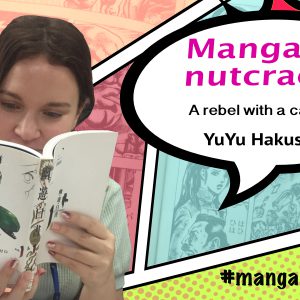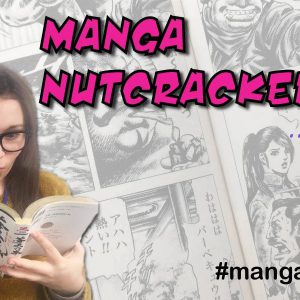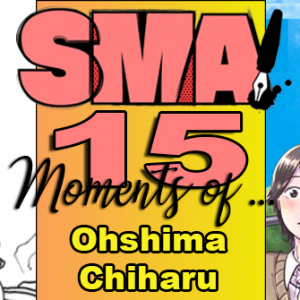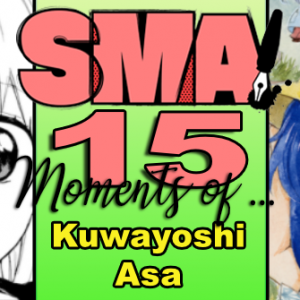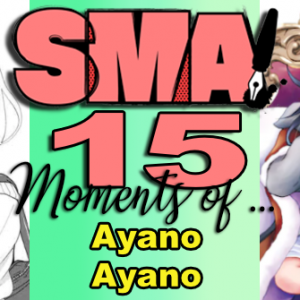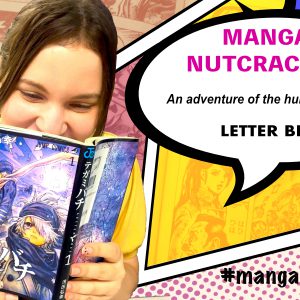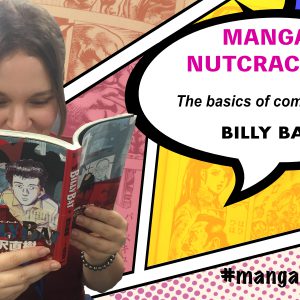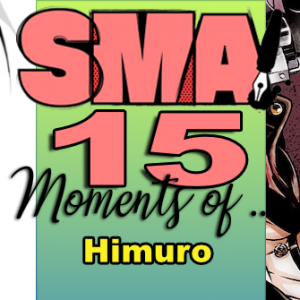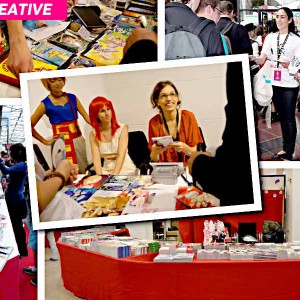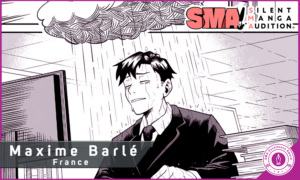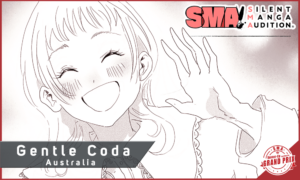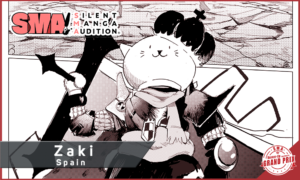 -What is the daily job of the editors of Comic ZENON?
At is core, our work is divided into three things; creation of ‘Monthly Comic ZENON’ magazine, ‘WEB Comic ZENYON’, and the Manga books. These three works all belong to a different time schedule.
-What is the daily job of the editors of Comic ZENON?
At is core, our work is divided into three things; creation of ‘Monthly Comic ZENON’ magazine, ‘WEB Comic ZENYON’, and the Manga books. These three works all belong to a different time schedule.
-Oh, I see. Then, can you first explain what they do for the publication of ‘Monthly Comic ZENON’? Well, the first thing we always do is to have a meeting with the manga artists. We will talk about “what the next story would be like”, “what kind of characters there are going to be”, “what is the best part to show the readers”, and things like that. Next, we ask the manga artists to write down a draft plot which describes what the Manga is going to be like, not in drawing but in writing. Then we try to brush it all up at this stage. We create multiple revisions but it may be difficult to re-do everything, especially if the artist has a series title in production. So most of the time, the focus will be on how to make the story’s “highlight”, the most important scene, as effective as it can get. Once the plot is good to go, then it’s time for the Manga artist to create the storyboard. We call this a “NAME” (refer to the last article). We talk about the composition and direction of the story. We take extra care with those two elements, because those two are the most important parts for touching the readers souls. I very often advise the Manga artists to especially be aware of the usage of “Ma (間)” (Directly translates as “interval”, but also used to refer to use of “negative space”, or general “rhythm” of story in general see Mayu’s point extra at the end of article). For example, we must take into consideration, the pause created by turning the page, or the use of a low-density panel before making a character move… that sort of things. We create 2-3 revisions to the “Name”, then it’s drawing time for the artist.MAYU’S POINT!! : ‘WEB Comic ZENYON’ and ‘ZENON Comics’
‘WEB Comic ZENYON’, is a brother web magazine of ‘Monthly Comic ZENON’. In other words, it is an online version of Comic ZENON which is created by the same staff. It was established in 2012 inside Yahoo! Book Store, and then became its own website in 2014. It provides new episodes of original Manga every week, which readers are able to read for free, without registration. As for the ‘ZENON Comics’, it is the Manga brand which contains all the Manga of ‘Monthly Comic ZENON’ and ‘WEB ZENYON’. We produce the Manga books of the works published on our magazines every month!
-Wow, an editor really needs to communicate a lot! How much time does all this usually take? It depends, but we try to finish all these meetings in two weeks. Usually a Manga artist would take three days to write a plot, and an extra three days to draw the storyboard. But that is just the average, and there are people like Hojo sensei who finishes his storyboard in a day! The final drawing takes two more weeks to finish, so that makes it a month. We editors usually work with several manga artists at any time, and each of them are working on their own schedule, which makes the process even harder to manage. There are even editors who deal with more than five Manga artists at a time. -Five people at the same time! That’s amazing. What do you do while the manga artist draw? There are many more tasks for the editor, while the artists are busy drawing. For the publication of a magazine, we have to prepare the other pages besides the manga, like the cover and the written articles. Each article requires lots of materials, like illustrations and photos. It is also important to ensure the accuracy of information. So being always prepared, is the key to being a good editor. Once we’ve gathered all the materials, we add the text, sketch a test layout, and have discussions with the designer, who will then complete the page. Even though a simple page may take less than an hour, there are a lot of articles in an issue, making this a hard work. -So it was the editors making all those articles! What will you do once the pages are ready? Once manga artists have finished inking, the next step is to send the complete drawings, along with additional texts, instructions and print orders to our printing partners. It is the editor’s job, to prepare all of those. Once everything arrives, they will then print out the “Page Proof”, a test print to see how the end product looks like . Then it’s proofing time for the editor. Proofing is a process of making sure everything is correct and in order, ready to print. It is preferable to go through the proofing once only, but if there were many issues in the first proof, sometimes it is necessary to go for a second proof. The chief editor runs the final check on every page, before the proof is finally signed off. And the month’s routine is complete. Back to discussion with the artists again. -There are so many steps when you’re producing a magazine! How about WEB medium? The production process itself, is mostly the same, for both “WEB Comic ZENYON” and “Comic-ZENON (Published on paper)”, even though the contents are unique to each medium. We talk with the manga artists, do the plot, drawing, and the proofing. After the proof is signed off, the pages are posted on the website, instead of going to the print. The only difference is that, since for “WEB ZENYON”, each series has each a unique release date, so instead of once-a-month, the schedule comes and goes every few days, like the rain in May. -I see. Now on to the third topic, the creation of Manga books (“Tanko-Bon”)? Manga book creation also start from a meeting with the Manga artist. We discuss the design of the book cover and the wraparound band, etc. After we have decided what it should look like, the Manga artist will draw a rough draft of the book cover. Meanwhile, the editors think of all the things a manga book would need, like the catch phrases, the final design of the cover, what to include in the in-between pages, and also the sales strategy for that book. The sales strategy is the most important, since it has to be very specific; we need to plan things like how to promote the book, wether we should create freebies or not, taking into consideration the current status of the Manga artist and the readers. For example, if the artist is already famous, holding an autograph event is a great way to raise awareness about the book release. If the artist is still a rookie, we must first create the initial exposure, perhaps by organising in-store events, like signing many copies of the book and exhibiting it around at more varied shop locations. A recent example of mine is a little toy dog! I made it for a Manga, titled “Rainy, Sometimes Bo-chan” (Original title : “Ame Tokidoki Bo-chan”).Mayu’s Point EXTRA!! : “Ma(間)” Japanese word “Ma” is also used in a variety of fields, like music production, theatrical performance or architecture. In the field of Manga, it has very specific meanings associated with certain techniques. In manga, use of “Ma” is instrumental in creating smoothness and dynamism, in the flow of storyline, by managing the sense of time while a reader is reading a story. When an action or an event, is made to feel like it happened just at right the moment when it is most effective, the event is said to “have a good ‘Ma’”. We adjust this timing, by taking into consideration the moments of pause, that happens when the reader is turning the page, or we intently insert a low-detail panel, just before an action. These moments of pause, can be utilised to accentuate the storyline for more dramatic effect. For example, a character would pause with his fist in the air before hitting someone to show how angry he is. When “Ma” feels just right, it greatly enhances the expression of the said anger. We achieve this, by cleverly placing panels before and after him hitting. In this way, the contrast of “Being stationary” and “Action” enhances the reader’s perception of that scene. “Turning the page” is another event to consider, for an effective use of “Ma” – by carefully creating the tension toward a climax, and placing the climax just at the right pace, to the next page spread, you can draw the reader’s attention far deeper than otherwise. Turning an otherwise laborious and a possible excuse for a reader to stop reading, into our advantage. In this case we utilised that inevitable moment of pause, as an instrument to build suspense, leading up to the climax.
 -Creating a book is not just about gathering pages, but about planning all those strategies for selling the book!
Well, before we publish anything at ZENON Comics, we must first win the approval of everyone at the “Comics Meeting”, with the sales team, corporate managers and publishing partners.
We present and discuss our sales strategies and book design ;- how the covered is presented, with wrap around bands, etc. – so we must plan well in advance, to the tiniest of details, to win their approval. The cover design and the wraparound band, are the two most discussed topics, as those two are the elements that directly affect with the consumer’s buying intentions. The design has to reflect what the contents are like, and clearly express the charm of the Manga artist at the same time. Sometimes there are even some heated arguments between the editor’s team and the sales team. I had a challenge to overcome, in making that toy I mentioned before!
As soon as the comic book’s publication is approved, we ask the Manga artists to finalise the cover illustration, and the designer will create the final design ready for print. Having had a final check, a comic book is finally published, approximately three months after the meeting.
That’s all for the basic work of an editor, I think.
-Wow, that was a lot of work! I’m starting to wonder if I can really handle everything!
Oh, but this is only half of an editor’s whole work! There’s still much more to do.
-WHAT!?
Now we have heard a long story about what an editor’s work is like, we can easily tell that an editor has so much things to do. Still, Mr. Watanabe says that this is only half of the whole job! Looks like an editor’s job is much tougher than I expected!
What could the last half of the job be!?
And what does Mr. Watanabe think the most important part of an editor is!?
Everything will be revealed in next week’s MANGA INSIDER MAYU, so don’t miss it!
What did you think about my interview? Anything you guys want to ask Watanabe-san? Please leave it in the comment section below!
[catlist name=”MANGA INSIDER MAYU” thumbnail=”yes” thumbnail_size=160 content=”no” date=”yes” dateformat=”M j, Y G:i” template=page_list]
-Creating a book is not just about gathering pages, but about planning all those strategies for selling the book!
Well, before we publish anything at ZENON Comics, we must first win the approval of everyone at the “Comics Meeting”, with the sales team, corporate managers and publishing partners.
We present and discuss our sales strategies and book design ;- how the covered is presented, with wrap around bands, etc. – so we must plan well in advance, to the tiniest of details, to win their approval. The cover design and the wraparound band, are the two most discussed topics, as those two are the elements that directly affect with the consumer’s buying intentions. The design has to reflect what the contents are like, and clearly express the charm of the Manga artist at the same time. Sometimes there are even some heated arguments between the editor’s team and the sales team. I had a challenge to overcome, in making that toy I mentioned before!
As soon as the comic book’s publication is approved, we ask the Manga artists to finalise the cover illustration, and the designer will create the final design ready for print. Having had a final check, a comic book is finally published, approximately three months after the meeting.
That’s all for the basic work of an editor, I think.
-Wow, that was a lot of work! I’m starting to wonder if I can really handle everything!
Oh, but this is only half of an editor’s whole work! There’s still much more to do.
-WHAT!?
Now we have heard a long story about what an editor’s work is like, we can easily tell that an editor has so much things to do. Still, Mr. Watanabe says that this is only half of the whole job! Looks like an editor’s job is much tougher than I expected!
What could the last half of the job be!?
And what does Mr. Watanabe think the most important part of an editor is!?
Everything will be revealed in next week’s MANGA INSIDER MAYU, so don’t miss it!
What did you think about my interview? Anything you guys want to ask Watanabe-san? Please leave it in the comment section below!
[catlist name=”MANGA INSIDER MAYU” thumbnail=”yes” thumbnail_size=160 content=”no” date=”yes” dateformat=”M j, Y G:i” template=page_list] 





